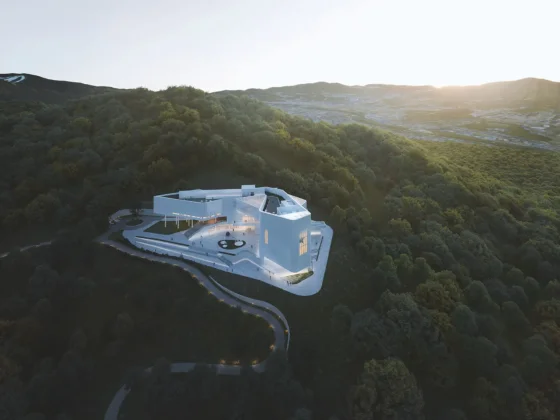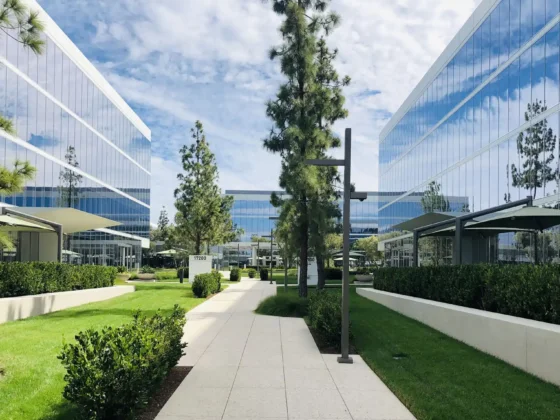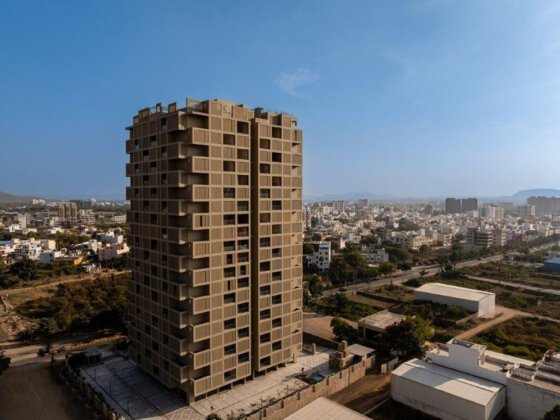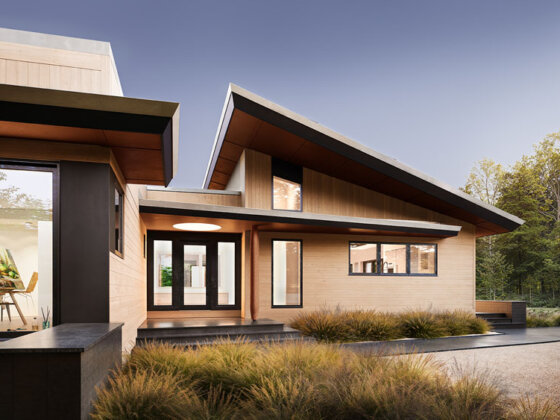Lo Barnechea, Chile
“This is our first tiny house, a modular prototype capable of adapting to many (and beautiful) natural environments. Prefabricated in wood, this project was conceived to give a deep experience of warmth and has architectural solutions that prioritize spaciousness: invisible doors, large windows, an origami-inspired staircase, and terraces that project the internal space. In short, a house ready to settle where your dreams take you,” says the architects of Cazú Zeger Arquitectura.

Tiny House is a prototypical, small-scale housing project by Cazú Zeger Arquitectura for a neighborhood outside Santiago, Chile, which uses prefabricated modules and inspired architectural solutions to provide a feeling of spaciousness both inside and out.
The project arises from the commission to propose a small neighborhood in the commune of Lo Barnechea (Santiago), which would be named after Pueblo La Dehesa.
The neighborhood project is conceptualized as an organic assemblage, comprising several sets of 12 housing units.
Together, these units will total 600 modules to accommodate different services like cafés, bakeries, and gourmet stores, among other functions.

Its purpose was to form a cluster system, like a pedestrian-densified town immersed in an open park with the Andes as a backdrop.
For this reason, the architects saw it as fundamental to understand these units as a pixel within a larger system.
To respond to this requirement, it became necessary to understand the whole as a whole, giving rise to organic urbanization, and to move away from traditional urbanization designs that did not allow the deployment of life and meeting places.

Drawing inspiration from the studies conducted by Cazú Zegers of dense forests, observing how the trees behave, the planning took cues from ‘botanical’ shyness.
This term refers to the ability of trees to detect the adjacent tree, so that they avoid touching, thus generating small ‘alleyways’ between them.
Based on this, the architects designed and plan where each housing unit is located, generating groups with small pedestrian passages.

The houses are composed of three typologies of prefabricated components: Type A house, 24.5 m2, considers a bedroom and a bathroom, the second, Type B, 49 m2, includes two bedrooms and a single bath, and finally, Type C, 63 m2, consists of two bedrooms and two bathrooms.
The three typologies include a kitchen, a dining room, and a living room.
In the homes, pine clear wood is the main material used, with elements of iron used throughout.

One of the architectural intervention that stands out in this project is the strategic prefabrication work to solve the three modular typologies.
Another intervention was the steel staircase inspired by Japanese origami, for which a piece of steel was manipulated as a sheet of paper, giving it a sculptural element.
The interior design proposal aimed to highlight spaces for enjoying life, incorporating elements that support a greater sense of luminosity and amplitude.
Together, these interventions reveal a clean and modular volume, joined by a lively and light-filled interior design and protruding terrace space.



Project: Tiny House
Architects: Cazú Zeger Arquitectura
Interior Design: Zegers y Figueroa
Modular System: RCM Group
Client: Private
Photographers: Marcos Zegers













